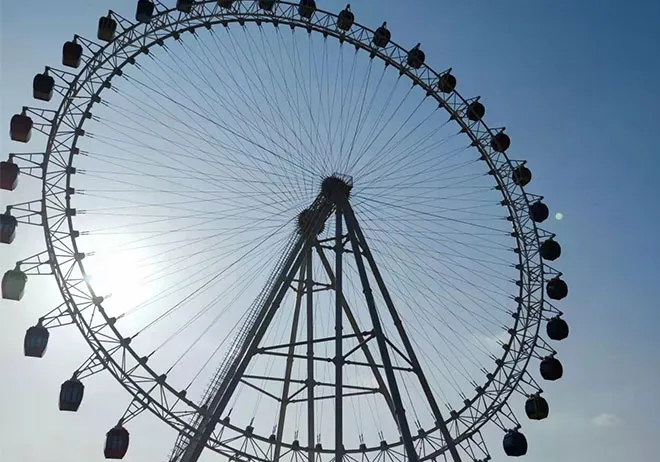- Albanian
- Arabic
- Belarusian
- Bengali
- Czech
- English
- French
- German
- Hebrew
- Hungarian
- Indonesian
- irish
- Italian
- Japanese
- kazakh
- Persian
- Russian
- Thai
- Uzbek
- Vietnamese
roller coaster in the world
The Thrill and Engineering Marvels of Roller Coasters Around the World
Roller coasters have long been a staple of amusement parks, captivating thrill-seekers and families alike with their exhilarating drops, spins, and dizzying speeds. As an iconic symbol of fun and adventure, roller coasters also showcase the impressive advancements in engineering and design. Across the globe, enthusiasts travel far and wide to experience some of the most breathtaking rides, each offering a unique blend of adrenaline and artistry.
A Brief History of Roller Coasters
The origins of the roller coaster can be traced back to the early 17th century with simple wooden ramps and sleds in Russia. By the 19th century, they had evolved into the steam-powered rides we recognize today. The first modern roller coaster, The Switchback Railway, was designed by LaMarcus Adna Thompson in 1884 at Coney Island, New York. This ride was the precursor to the thrilling coasters we see now; it featured gentle slopes and turned corners, offering a new dimension to amusement park entertainment.
The Engineering Feat
Roller coasters epitomize engineering excellence, combining physics, creativity, and technology. Modern coasters can reach insane heights and speeds, defying gravity with intricate loops, corkscrews, and spirals. The use of computer-aided design (CAD) and simulations has transformed the planning stages, allowing engineers to create rides that push the boundaries of safety and excitement.
Take, for example, Steel Vengeance at Cedar Point in Ohio, USA. This hybrid wooden-steel coaster has eight inversions and an incredible drop of over 200 feet. Its innovative design blends the classic feel of a wooden coaster with the smoothness of steel, resulting in an unforgettably thrilling ride.
Notable Roller Coasters Worldwide
When discussing the world's most extraordinary roller coasters, several names come to mind
1. Fury 325 Located at Carowinds in North Carolina, this giga coaster stands 325 feet tall and reaches speeds of 95 mph. Its sweeping turns and airtime hills create an exhilarating experience for riders.
roller coaster in the world

2. Kingda Ka Found at Six Flags Great Adventure in New Jersey, Kingda Ka is the tallest roller coaster in the world, soaring to an astonishing height of 456 feet. The ride launches riders from 0 to 128 mph in just 3.5 seconds, providing an adrenaline rush like no other.
3. The Smiler Nestled in Alton Towers, UK, this coaster features a record-breaking 14 loops, making it the most looping coaster in the world. Riders are taken on a journey that twists and turns at a breakneck pace.
4. Takabisha Located in Japan's Fuji-Q Highland, this coaster is notable for having the steepest drop in the world at 121 degrees. The ride culminates in a breathtaking free-fall that leaves riders gasping for breath.
5. Intimidator 305 Found at Kings Dominion, Virginia, this coaster boasts a height of 305 feet and speeds reaching 90 mph. Its sharp turns and breathtaking drops provide a thrilling experience that has earned it a dedicated following.
The Future of Roller Coasters
As technology continues to advance, the future of roller coasters looks to be a blend of innovation and immersive experiences. Virtual reality (VR) is gradually making its way into roller coasters, allowing riders to experience additional layers of excitement as they soar through virtual landscapes while experiencing physical thrills.
Furthermore, sustainability is becoming a priority in the amusement park industry, with some parks exploring ways to incorporate environmentally friendly materials and energy-efficient technologies into their rides.
Conclusion
Roller coasters are more than mere rides; they are a celebration of human ingenuity, creativity, and the pursuit of thrills. From their historical roots to cutting-edge designs that push the limits of engineering, these exhilarating attractions continue to evolve, drawing millions of visitors each year. Whether you're a lifelong enthusiast or a first-time rider, the thrill of a roller coaster beckons, promising unforgettable adventures that transcend age and culture.
-
Flume Ride-Hebei Zhipao Amusement Equipment Manufacturing Co., Ltd.|Thrilling Water Attraction&Customizable DesignJul.30,2025
-
Flume Ride - Hebei Zhipao Amusement Equipment | Water Coaster, Thrilling DescentJul.30,2025
-
Flume Ride - Hebei Zhipao | Thrilling Water AttractionJul.30,2025
-
Flume Ride: Thrilling Water Attraction by Hebei Zhipao|Log Flume Manufacturers&Flume Ride DesignJul.30,2025
-
Flume Ride-Hebei Zhipao Amusement Equipment Manufacturing Co., Ltd.|Thrilling Water Coaster, Safe DesignJul.30,2025
-
Flume Ride-Hebei Zhipao Amusement Equipment Manufacturing Co., Ltd.|Thrilling Water Attraction, Safe DesignJul.30,2025
